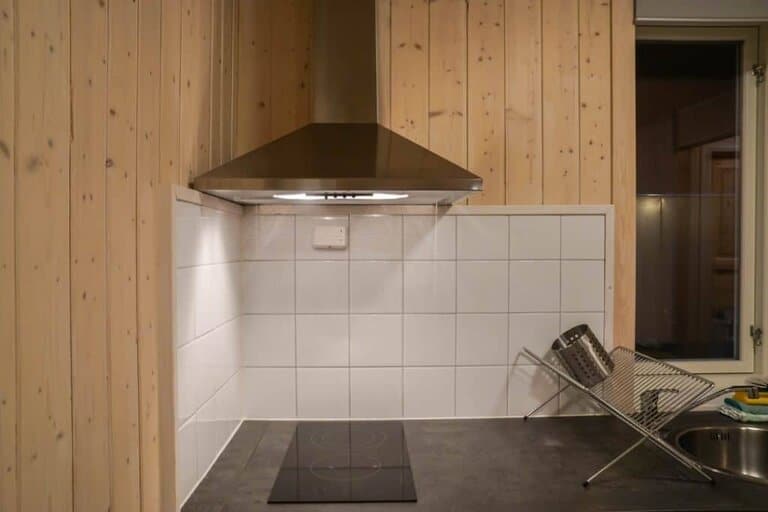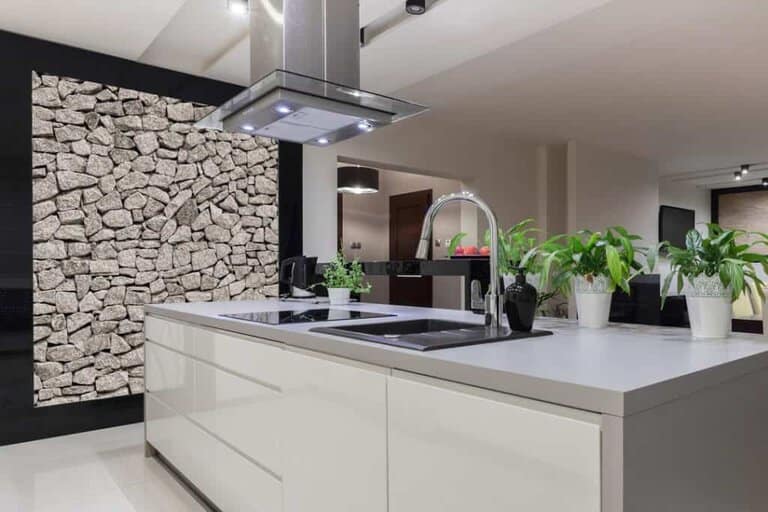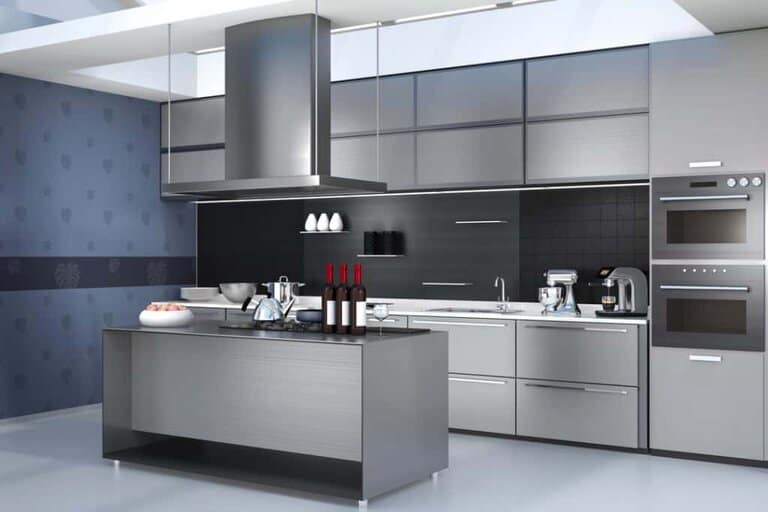Yes, Induction cooktops need a vent. Even though the heat and smoke coming from induction cooktops are a lot less than compared to gas or electric cooktops, you will still need a ventilation system in place.
When you are cooking in the kitchen, you need to have the proper ventilation. There is a lot of heat, steam, and smoke, and you can’t have all of that in your kitchen. You need to have the proper ventilation set up for the induction cooktop to keep the air in your kitchen fresh and clear!
With the right ventilation system, food odor and steam can dissipate quickly. Moreover, ventilation hoods also help in trapping grease. Let’s learn all there is about induction cooktops and ventilation.

What is a Ventilation Hood?
A ventilation hood is generally an exhaust fan that you install over the induction cooktop that will pull air through it as it runs. It will remove the cooking grease and keep the kitchen clean. It will remove the cooking odors and your kitchen will smell fresh
Moreover, a vent removes the hot air from the cooktop and will keep your kitchen cooler. If you get a ducted vent, it will reduce moisture and condensation that collects on the induction cooktop.
Why Should You Get Ventilation Hood
If you have an induction cooktop, it will create less ambient heat as compared to an electric or gas cooktop. This means that your room will stay cooler and a hood is not that important for removing the cooking heat.
However, it is not the only reason why you need a range hood.
- Makes the Air Healthier
A ventilation hood usually comes with air purification systems. Instead of simply working to provide ventilation in your kitchen, they also make the air healthier. The smoky air in the kitchen is not good for your lungs. If you are having respiratory issues, this is a huge advantage for you.
There is a fan in the ventilator hood. This aids in moving the air in your kitchen. It also helps in trapping nasty grease and filtering the dust particles. This makes the indoor air healthier, fresher, and cleaner.
Vents remove toxic gasses such as carbon dioxide, nitrogen oxide, and carbon monoxide.
- Removes Grease and Cooking Odors
If you fry a lot of things in your kitchen, it will produce a lot of smell as well as grease. If you don’t have a vent to suck up all the stray, sticky particles along with the residual smell, they will linger in the kitchen.
Therefore, a vent will keep your kitchen clean and reduce the foul odors.
- Increases Safety
With an exhaust hood, your cooking becomes safer. The vent keeps most of the cooking grease over the induction stovetop and pulls it out of your kitchen. With less splattered grease, you will have a safer environment.
There will be fewer chances of spills & falls, fewer chances of accidental fire, and fewer bacteria & germs will spread around your kitchen.
- Visually Appealing
The ventilation units are visually appealing as well and add a sophisticated vibe to your place. The beautiful aesthetics and smooth finish add a modern touch to the kitchen.
Different Types of Cooktop Hoods
There are different kinds of cooktop hoods based on their functionality, how they are mounted, etc.
Based on Functionality
Based on their work, there are two kinds of cooktop hoods.
- Ducted
- Ductless
Ducted Hoods
Ducted hoods exhaust air outdoors through a hole in the ceiling or a wall. They are extremely effective. However, their installation is complicated and their fans are noisy.
Ductless Hoods
In ductless hoods, there are charcoal filters that trap grease. The air in your kitchen passes through this filter and then recycles it back in. They are easy to install, inexpensive, and don’t take up a lot of space.
However, they are not as effective as ductless hoods.

Based on Style
When it comes to the way the vents are mounted, there are four types of cooktop hoods.
- Downdraft
- Ceiling Mount
- Wall Mount
- Under Cabinet Mount
Downdraft Hood
Downdraft hoods retract into a groove present behind or alongside the cooktop and pop up when you turn them on. They are used in peninsula or island setups where it is not possible for you to vent upwards.
The fan sits within the island or is installed beneath the floor in your basement, where the vent is then exhausted outside. There are ductless downdraft vents as well. Basement-installed vents are quieter and more powerful.
However, they are more expensive as well.
Ceiling Mount
Ceiling mounted vents hang from the ceiling and are mostly used over induction cooktops on a peninsula or an island. You can mount them high up to avoid the hood from blocking the view. However, in this case, the vent will have to be larger and more powerful for them to be effective.
The flat, chic design of the ceiling-mounted vents means that they have flat exhaust fans that are not as powerful as centrifugal fans. This design is slightly less efficient at exhausting and suctioning cooking odors and grease.
If you are looking for a flat, ceiling mounted vent, then you need to buy one that has more power to ensure that there is proper ventilation in your kitchen.
Wall Mount
It is one of the most common range hoods. These can duct straight up, out the back, or horizontally. They are available in different styles and sizes. You can hide them behind the cupboards or inside a custom installation.
They have powerful exhaust fans and thus work really well. However, they are slightly expensive.
Under the Cabinet Mount
This kind of vent fits under the kitchen cabinet and above the cooktop. They can be either ductless or ducted. If the range is on an outside wall, then these vents can duct out the back. If the range or cooktop is not near a wall, then they can duct through the ceiling.
They are space saving and are one of the least expensive vent hoods.
How to Know Which Type of Vent You Need for Your Induction Cooktop
If you are installing a new vent, then you can install any type that you want. If there are cupboards over your induction cooktop, then you should go for an under the cabinet mount. If your cooktop is present on an outside wall, then you can easily install a ducted wall mount.
If your induction cooktop is present on an island, then you will have to use a ceiling mount, or in a less ideal scenario, a downdraft. There are a few other things that you need to keep an eye out for such as usability, durability, and longevity.
What Size Vent Should You Get
Ideally, the vent should extend a couple of inches around the side of the induction cooktop. For instance, if there is a 30-inch induction cooktop in your kitchen, then you should get a 36-inch vent.
This will provide 3 inches on each side of the cooktop. It will ensure the best possible coverage which will in turn provide you with the most efficient exhaust. However, most kitchens are designed for the vent to be the same size as the induction cooktop.
If your kitchen has a 30-inch induction cooktop, then you might have room for only a 30-inch vent. If such is the case, it is certainly not the end of the world. The vent is still going to work as long as you get a vent with a higher CFM rating.
How Much Power Should an Induction Cooktop Vent Should Have
When it comes to the power of cooktop vents, it is measured in CFM – cubic feet per minute. When it comes to deciding the power of your vent, there are a couple of things that you have to keep in mind.
Ducting
If easy access to the outside is not available through the ducts, and the ducts have a lot of twists and turns, you will need a powerful exhaust to compensate for this. If you have 6 ft. of ducting, then you will require a vent motor with a 600 CFM rating at least.
Diameter of the Duct
If your ducting diameter is too small, then it will have a negative impact on the ability of the hood to ventilate the kitchen effectively. Therefore, check the recommended diameter by the vent’s manufacturer and use that.
Room Size
If you have a small kitchen, it will require less ventilation as compared to a large one.

FAQs for Does an Induction Cooktop Need a Vent
How many ventilation units do we need for our kitchen?
This depends on the space and size available. Generally, if your cooktop is positioned against the wall, then you would need 40-100 CFM for each linear foot in width. For island cooktops, about 50-150 CFM would do great.